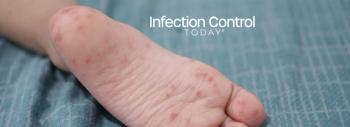
New Tuberculosis Blood Test Is Often "Indeterminate" in Children
A new type of blood test for tuberculosis (TB) has important limitations for use in children—especially very young children and those with abnormal immune function, reports a study in the August issue of the Pediatric Infectious Disease Journal.
Two accompanying editorials offer divergent viewpoints regarding the most appropriate use of the new tests—called interferon-gamma release assays (IGRAs)—in children at risk of TB.
In a study led by Dr. Thomas Haustein of Great Ormond Street Hospital for Children, London, researchers analyzed the results of IGRA testing in 237 children with suspected or possible TB. The IGRA tests are increasingly used in place of conventional skin tests for diagnosing latent (present but inactive) TB infection or active TB disease.
The study found that 35 percent of the children had "indeterminate" results on IGRA testing, leaving it unclear whether or not they had TB infection or disease. Many of the children referred for TB testing had abnormal immune function because pf disease or other reasons (for example, cancer chemotherapy). For this group, the rate of indeterminate results reached 66 percent.
Indeterminate results on IGRA testing were also more likely for younger children. Among children with normal immune function, the rate of indeterminate results decreased by 13 percent for each one-year increase in age.
In nearly 90 percent of children, the results of IGRA testing agreed with standard skin tests. However, the IGRA test missed one-fourth of children (12 out of 16) who later developed confirmed tuberculosis.
The diagnosis of TB can be difficult to make, especially in children. The IGRA tests offer some important advantages over standard TB skin tests, which have been used for decades. Although their use is recommended in national guidelines, experience with IGRAs is still limited—especially in children. "We certainly do not dispute that IGRAs can yield valuable diagnostic information in children, but our results highlight some problematic issues," Haustein and colleagues write. Pending further research, they often perform both IGRA and skin testing in children at risk of TB.
So how should the IGRA tests be used in children? A pair of editorials provide expert perspectives. Dr. Deborah A. Lewinsohn of Oregon Health Sciences University believes that, despite the limitations, health care providers should embrace IGRA testing, rather than clinging to the "antiquated" TB skin test. She concludes, "We need to keep moving forward to prevent child health from falling behind, gain more experience with IGRAs to create rational guidelines, and continue to demand attention to one of the most vulnerable populations to TB."
Dr. Dwight A. Powell of The Ohio State University College of Medicine takes a different view, highlighting the potential inaccuracies of IGRAs in children. He calls for more research into the high rate of indeterminate results and other unanswered questions about IGRA testing in children, before they replace TB skin tests—especially in young children who are at highest risk of developing active TB disease.
Newsletter
Stay prepared and protected with Infection Control Today's newsletter, delivering essential updates, best practices, and expert insights for infection preventionists.






